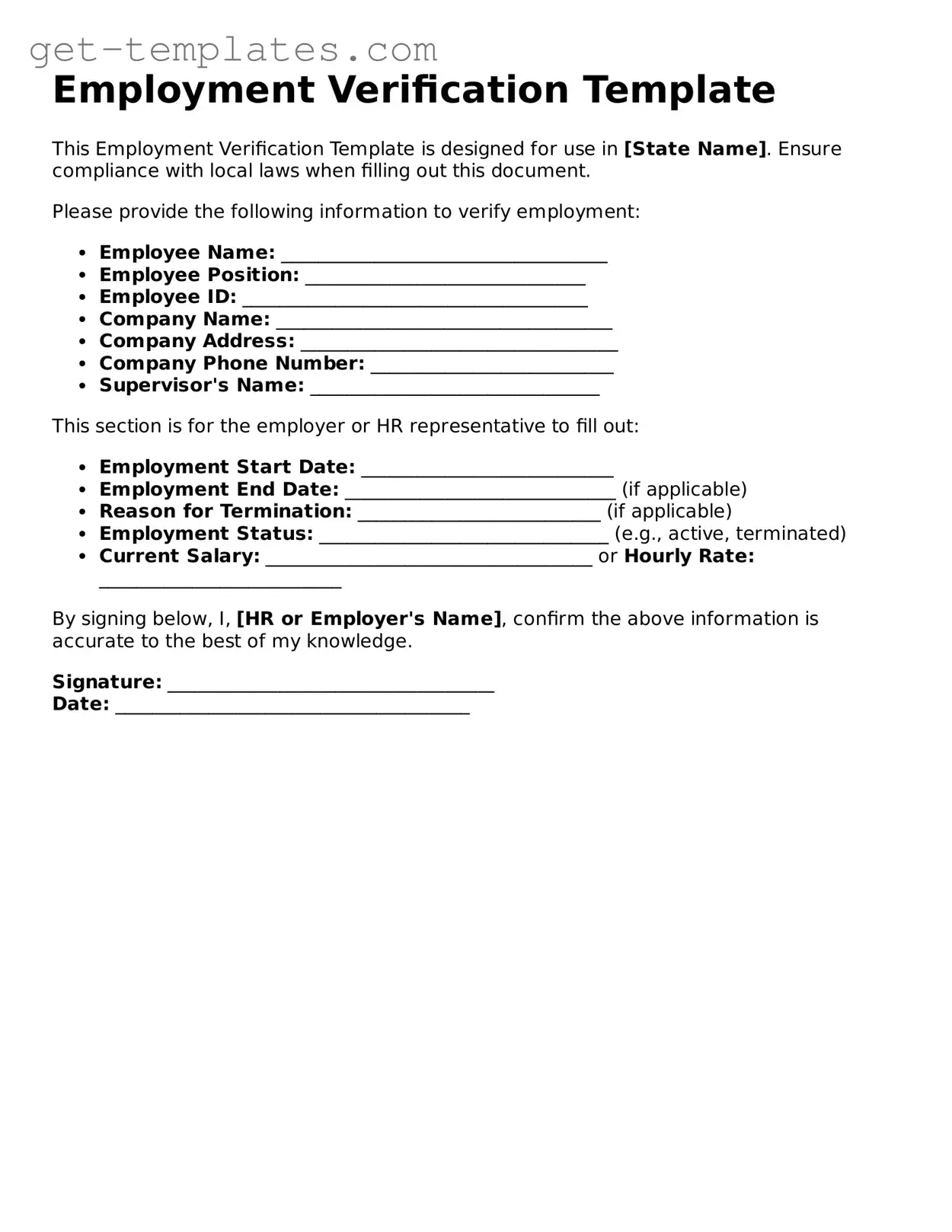Employment Verification Template
This Employment Verification Template is designed for use in [State Name]. Ensure compliance with local laws when filling out this document.
Please provide the following information to verify employment:
- Employee Name: ___________________________________
- Employee Position: ______________________________
- Employee ID: _____________________________________
- Company Name: ____________________________________
- Company Address: __________________________________
- Company Phone Number: __________________________
- Supervisor's Name: _______________________________
This section is for the employer or HR representative to fill out:
- Employment Start Date: ___________________________
- Employment End Date: _____________________________ (if applicable)
- Reason for Termination: __________________________ (if applicable)
- Employment Status: _______________________________ (e.g., active, terminated)
- Current Salary: ___________________________________ or Hourly Rate: __________________________
By signing below, I, [HR or Employer's Name], confirm the above information is accurate to the best of my knowledge.
Signature: ___________________________________
Date: ______________________________________
